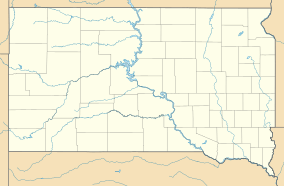Lake Andes National Wildlife Refuge facts for kids
Quick facts for kids Lake Andes National Wildlife Refuge |
|
|---|---|
|
IUCN Category IV (Habitat/Species Management Area)
|
|
| Location | Charles Mix County, South Dakota, United States |
| Nearest city | Lake Andes, SD |
| Area | 5,638 acres (22.81 km2) |
| Established | 1936 |
| Governing body | U.S. Fish and Wildlife Service |
| Website | Lake Andes National Wildlife Refuge |
The Lake Andes National Wildlife Refuge is a special protected area. It is located in the state of South Dakota in the United States. This refuge covers about 5,638 acres, which is like 22.8 square kilometers. It is a safe home for many different kinds of animals and plants.
The U.S. Fish and Wildlife Service manages this important refuge. This government group works to protect wildlife and their homes across the country. Most of the land here is protected to make sure animals have a safe place to live.
About Lake Andes Refuge
The Lake Andes National Wildlife Refuge was created in 1936. Its main goal is to protect the natural environment. It helps keep the lake and surrounding lands healthy. This way, many different species can thrive. The refuge is a key part of the Lake Andes National Wildlife Refuge Complex. This means it works with other nearby protected areas.
The Lake Itself
Lake Andes is a natural lake. It gets its water from underground springs. This is a bit unusual for a lake. About every 20 years, the lake can dry up completely. This is a natural part of its cycle.
The lake is divided into three sections. Two special walls, called dikes, separate these parts. This helps to keep water in the lake. It is especially helpful during dry summers. This design helps the lake stay a good home for wildlife.
Amazing Animals
Many different animals call Lake Andes National Wildlife Refuge home. Over one hundred types of birds nest here. You might see majestic Bald eagles flying overhead. Ring-necked pheasants are also common. You can also spot Northern pintails and many other kinds of ducks and geese. It's a great place for birdwatching!

Besides birds, many mammals live in the refuge. You might see White-tailed deer grazing. Coyotes and badgers are also common residents. Muskrats can be found near the water. These animals all play an important role in the refuge's ecosystem.



